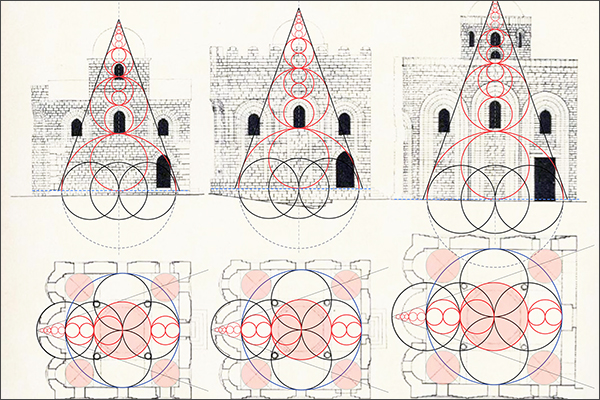Santa Maria dell’Ammiraglio: method and interpretation
DOI:
https://doi.org/10.15168/xy.v4i8.157Keywords:
Arab-Byzantine, Norman, quincunxAbstract
In Norman Sicilian churches, the synthetic-abstract ability to manage elementary geometries by Arab workers, meets with the Byzantine ascetic interlocution, firmly nourished by the incontrovertible dogmas of Mount Athos. The only ones evoke the divine with a blocked architecture, with large surfaces and a simple and rigorous stereometry; the others, with images shown on walls, vaults and domes, subliminally express the cryptic message of eternity. The volumetric space of S. Maria dell’Ammiraglio is the harmonic result of the contiguity of two facies, the confirmation of two cultural hegemonies, with defined but organically related structures and forms. The Arab-Byzantine cultural syncretism is concentrated in the geometric construction of the quincunx on which they both based the communicative power of their artistic-decorative traditions to express the highest spiritual values on the plane with the alternation of circles and squares. Arabs and Byzantines find in the quincunx their degree of cultural compatibility, a common DNA that makes these two organisms culturally compatible capable of deriving from art a new geometric lexicon that is realized, in architecture, in the three-dimensionality of space. The Church dell’Ammiraglio miniaturizes in a design-compositional plot the spirit and specificity of an architecture that synthesizes the geometric-spatial relationships drawn from the quincunx that evolve into the two complementary geometric paths: the ‘static progression of concentric circles’ and ‘dynamic progression of the scalar circles’. The two storytelling of the specular floor-dome comparison are the weaving of an incessant play of intertwining between space and decorations, and the complementarity useful to manage all the degrees of proportionality encoded in the three spatial areas of the church, height, length and width, in organic synchrony with the geometry of the church’s mosaic and floor decorations.


